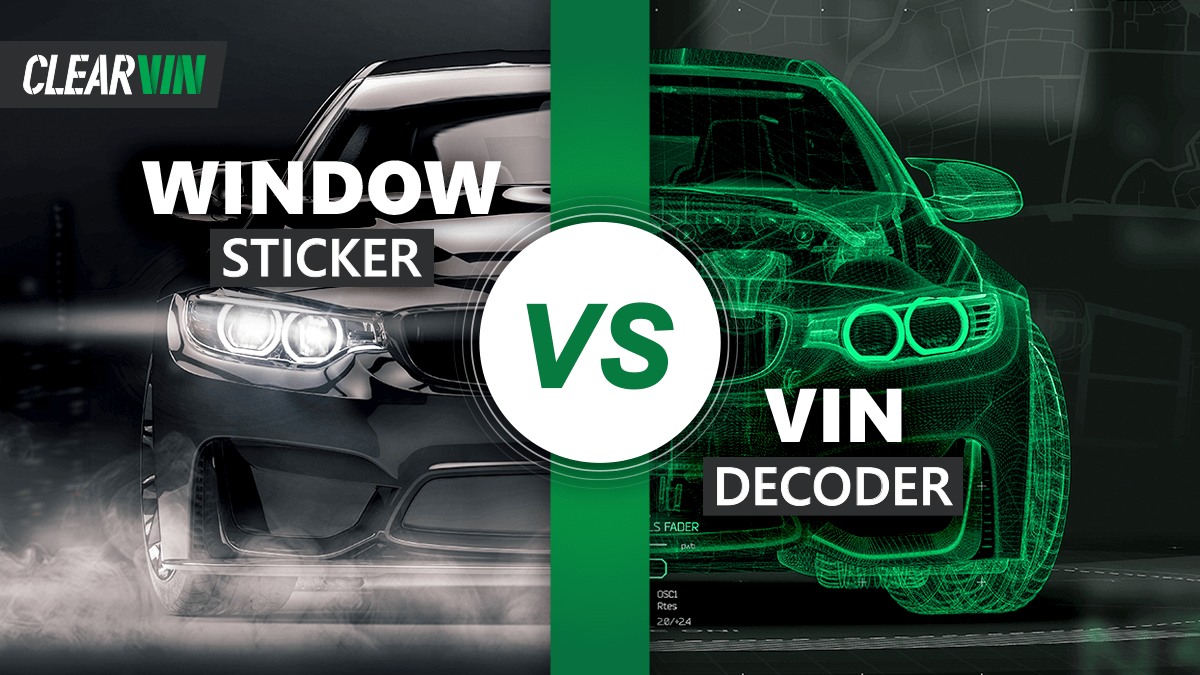Today, we have tons of various VIN verification services, so how do you choose the most reliable and appropriate one? The answer is simple – just review the information provided by each of them and compare pricing. Let’s find out what you can pull up with the ClearVin vehicle report!
1. Report summary
Our report summary is a short overview of the report to help you navigate within the page with a report representation.
2. ClearVin Vehicle Rating
The ClearVin vehicle rating is a tool that enables you to understand a used vehicle’s history quickly and easily. We use a letter-based system (A to F) to assess the vehicle’s condition and its background. An “A” rating means the vehicle has an excellent history without significant issues, while an “F” indicates irreparable damage with all possible consequences. Based on evaluating vehicle data by pre-defined criteria, our rating system delivers both a concise and accurate picture of the vehicle’s past and appraises its current condition.
3. Vehicle Specifications
Our VIN decoding system breaks the VIN number down into dozens of data points concerning the manufacture of the vehicle. The complete overview of the vehicle’s features and specifications by ClearVin includes a year, make, model, trim, style, steering type, vehicle dimensions, and many others.
If you need even more information about car specifications, ClearVin has you covered. Make use of a special tool we offer that looks up a Window Sticker by VIN. In addition to basic car specs and other key vehicle details, the window sticker lookup dives deeper, providing exterior and interior colors, standard and additionally installed features, pricing, safety ratings, and much more.
4. Vehicle ownership History
The vehicle ownership history is one of the most important pieces of information for those who want to buy a used car. With a vehicle history report from ClearVin, you can uncover the following details:
- auto registration and vehicle ownership transfer dates;
- the number of prior owners;
- states of vehicle ownership;
- last reported mileage;
- vehicle usage type.
In addition, the ownership usage type indicates if a vehicle was previously registered as personal, business, rental, government, or other. You may also discover if a car was obtained through leasing. This information aids in determining wear and tear, potential title concerns, and ownership changes over time.
5. Vehicle Value Information and Auction Price Analysis
The ClearVin valuation section combines historical purchase and real-time auction data to provide a complete review of the market value of a given vehicle. It contains information about peak and average sale value, trade-in value, and auction value supplied by NADA. Valuation information might come in handy during the negotiation process and guarantee you a fair price.
6. Salvage Information
Salvage records is a vehicle report section that contains information about vehicles that are or were declared as salvage or junk and registered at any of the junk or salvage yards. A salvage title itself means that it would cost more to repair the vehicle than it’s worth. Salvage records are submitted by the National Motor Vehicle Titling Information System, and include dates, reporting agency names as well as address and contact details. Also, it identifies whether a vehicle can be exported.
7. Insurance Records
Insurance records appear if a vehicle has been declared a total loss by the insurance company, which usually happens if a car was totaled or stolen. In short, it means that an insurer paid out the current value of a damaged car to the owner and put it up for sale at some salvage auction like Copart or IAA rather than to cover the vehicle’s repair costs. If you’re looking to understand the term in more detail, we suggest reading our article, “What does total loss mean?”
8. Title History Information
The title history information section of a vehicle history report covers both current and historical records in the vehicle’s title, providing a title issue date as well as a date, state, and relevant mileage on each further entry. This information can help the potential buyer track the number of owners and states of operation of a car.
Among the key pieces of title history information, we can highlight the Current Title Information section. It covers the most recent registration record for a vehicle title reported by NMVTIS. Historical Title Information refers to all title registration records and specific brand assignments, like salvage and rebuilt, in a vehicle title. This information can help the potential buyer track the number of owners and states of operation of a car.
9. Odometer history
The odometer reading was initially invented with the aim of assisting owners in safely scheduling maintenance checkups and inspections. However, for all used car buyers, it became a key indicator of a vehicle’s value, which is not surprising as it says a lot about the condition of its major parts. We obtain odometer records from all state DMVs to provide the most reliable odometer reading of every VIN registered within the U.S.
Within the ClearVin report, the odometer reading history section uncovers the total distance covered by the car. This information points out some valuable insights into the vehicle’s condition, value, and potential maintenance it may require. The odometer history details cover the current odometer reading, mileage progression, and identifying if it’s exceeded the average mileage for the same vehicle. Additionally, the report alerts you to the possibility of an odometer rollback, if any.
10. Title Brand Information
A vehicle title brand is a permanent designation on a vehicle’s title that indicates that a vehicle has been declared a total loss due to collision, fire, or flood damage or has been sold for scrap. These records are vital, as they help to check whether a vehicle used to have serious damage. Besides, some title brands, like junk, imply that the car can’t be driven on the road anymore. To find out more details, read about the most dangerous vehicle title brands.
11. Auction Sales Information
The ClearVin auction data section contains all instances of a vehicle going up for sale through the most popular salvage auctions such as Copart and IAAI. Our auction sales history delivers the vehicle characteristics at the time of the auction, types of damage, and all associated vehicle photos. Checking the vehicle’s past condition will help you negotiate well.
12. Lien and Impound Records
One of the most important things to do when buying a used car is to check its documents. Any legal ownership transfer as well as further insuring, reselling, or exporting is impossible if a vehicle has an active lien. Within the ClearVin report, the Lien & Impound Records section provides information about any outstanding or past financial claims as well as legal holds on the car. Lien and impound records are collected from multiple sources to reflect both historical and current title data. The Impound Records section includes the date and state when a vehicle has been towed. Current lien title records are reported by NVS and appear when the vehicle has an active lien. Meanwhile, the Historical Title Lien Records section reveals past lien and leasing records in vehicle titles. It may also list the title number and additional details.
13. Detailed History
Detailed History is a comprehensive report summary that lists the most important records from the whole report showing them in chronological order for your convenience.
14. Recalls
ClearVin offers the NHTSA safety recall search tool based on a vehicle’s year, make, and model. The safety recalls section highlights any recalls issued by the manufacturer or initiated by NHTSA, including details such as recall date, affected components, summary, remedy, and dealer contact information. We are continuously working on our report, both enhancing the data performance and extending the data sources to cover more recall details.
15. Theft records
The Stolen Summary section provides information on whether the vehicle has ever been reported as stolen. The corresponding field is populated only in case a vehicle is currently listed as stolen or was recovered after a thief; otherwise, it remains empty with the “No issues reported” note. Recovered is a car status that means that the vehicle has been recovered by law enforcement after being reported as stolen. However, it does not mean that the vehicle has been repaired or restored to its original condition. Usually, such a car comes with a salvage title and other damages like vandalism and minor damages or scratches.
16. accident & damage history
The Accident & Damage History report section provides information about accidents or damage that the vehicle has been involved in, including the date, repair costs, and odometer status. The unit is built based on auction data and covers auction damages like front or rear damages, mechanical damage, undercarriage, and others. However, not all damage-related events are currently reported to ClearVin. The report may not contain minor damages, scratches, or undocumented vehicle issues.
The Takeaway
The ClearVin VIN check tool is perfect for both used car buyers and dealers. For dealers and other automotive businesses, we have a special solution: the ClearVin Dealer Program, which provides bulk access to vehicle reports. Of course, you might be interested in different motor vehicle records when buying a car at the auction or dealership. When performing a car VIN number lookup, we’re trying to combine items that need to be verified, no matter who the seller is, for the best pricing on the market.










2 comments
ClearVin gets reports to me fast and they have tons of information. There’re the best!
Thank you for helping people..this side give us more details about my vehicle report
I need to spend some time learning more or understanding more.